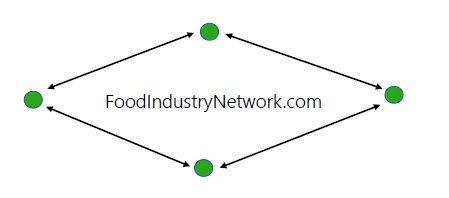CropTracker aims to improve pre-harvest fruit production
A picture is worth a thousand words but each image taken in a Crop Load Vision beta test could be worth $1,000.
CropTracker Inc., a Kingston agriculture technology company, is developing a new artificial intelligence enhancement for Harvest Quality Vision by bringing its scanning ability into the orchard.
The technology allows growers to scan unharvested fruit for possible defects, colour and size to improve the accuracy of yield estimates, harvest timing predictions and pruning management.
Why it matters: More accurate data on fruit pre-harvest gives growers better opportunities to protect produce and better plan their marketing.
Jeff Chemeres, chief strategy officer for CropTracker Inc., said they’ve begun collecting data this year and expect to capture enough information over the next two years to annotate and teach the system what to look for.
When CropTracker developed Harvest Crop Vision several years ago, Ontario apple and tender fruit growers played a key role in testing the technology in their facilities. Much the same process is happening now, Chemeres said.
The company collects fruit size and colour data and growers help determine a template for the ideal parameters of any given class of apple or tender fruit or ideal spacing of buds.
The more data collected, the more valuable the tool will become in assessing the effectiveness of pruning or inputs, Chemeres said.
“Our real goal is to is to help growers, right from the moment they step on the field or into the orchard in the spring, to the point where they actually put it (products) into storage bins and ship it out.”
With climate changes and increasingly limited access to chemicals, growers need relevant data to efficiently manage their crops.
“Our system will give them evidence, or give them data, that they may not have seen before,” Chemeres said. “That’s really what our passion is here, to give them as much information as possible so they can somehow continue to feed us.”
Even a five per cent increase in efficiency and quality of output can provide thousands of dollars in profit for farmers, he said.
Phil Tregunno, chair of Ontario Tender Fruit Growers, said labour is the biggest cost for many growers so added automation can reduce expenses.
“An enhanced Harvest Quality Vision system will help growers have more consistent, higher quality fruit and less reliance on manual processes,” said Tregunno.
Brian Rideout, an early adopter of CropTracker and HQV, said the new AI tech won’t reduce time he spends in his orchards because that’s what he enjoys most. But it will increase the orchard’s efficiency.
“This smart technology will let us respond more quickly to crop load problems, quality defects or disease issues not just before harvested fruit is packed but also even while the crop is still growing in the orchard,” said Rideout, the vice-chair of Ontario Apple Growers.
“It’s another tool for growers to ensure we’re producing and delivering the best quality local fruit for consumers.”
Using a LIDAR camera on a cellphone to provide initial data on quality, colour, potential disease issues and density is one more tool to improve management, quality and overall environmental practices for growers, said Rideout.
They can see each tree and pinpoint trouble areas before larger issues emerge.
Jillian, Rideout’s 18-year-old daughter, is testing the CLV on their orchards this season, and Rideout said her participation reflects OAG’s efforts to attract young growers.
“I said to her, this is a challenge for you if you’re thinking about this as an industry to get into,” Rideout said. “This is a facet of the industry that you can look at.”
At least one orchard planted in 1984 is still in production on Rideout’s farm, but several intensified fruiting wall style orchards were planted in 2016, he said.
The 2016 orchards are faster to prune, provide better crop protection, have better safety for workers and produce a better apple, even though their initial cost was higher than the 1984 orchards, said Rideout.
Their orchard records go back 40 years, and while he considers himself highly attuned to detect the colour, size and quality of apples on a tree, Rideout was impressed with the early CLV data.
“(The apple colour) was actually better than what I thought, to be honest with you. I’m kind of critical of myself and my orchard,” he said. “And it confirmed that the steps that I took this summer are pretty close to where I want to be for my standard as a grower.”
The data confirmed that 80 per cent of his bins were hitting his premium apple parameters. When the technology indicated one container wasn’t as high, he used the CropTracker suite of programs to confirm they were from traditionally underperforming trees.
The CLV program highlights the quality of fruit buds and has proven its worth in that department, Rideout said.
Human error during a new foliar product trial led to some improper limb pruning, which resulted in some bud uniformity issues.
“In a 14-inch space, I counted 12 buds. On that same tree on a limb that wasn’t properly thinned out, all we could find was six,” said Rideout. “By over-cropping that tree, we actually affected next year’s crop.”
The unbiased appraisal provided by CLV counters the human inability to assess subtle anomalies on trees that will impact the harvest.
“If you want to hit that mark, you’ve got to know why you’re missing it, and this is where the artificial intelligence is going to give that grower the answer,” Rideout said.
The beta project is partly funded by the Canadian Agricultural Partnership.
Source: Farmtario.com

